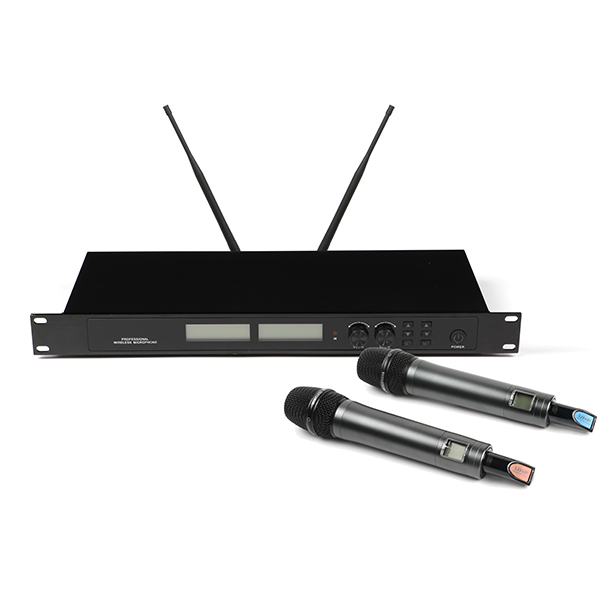Enping Microphone tells you the main differences between u and V wireless microphones
The differences between u-segment and v-segment wireless microphones are mainly manifested in the following four aspects
1. Transmission signal of transmitter
In VHF (V segment) wireless microphone transmitter, several frequency multiplier circuits are used to obtain high frequency signal, and the carrier frequency of transmitter signal is fixed.
Most of the UHF wireless microphone transmitters use PLL technology to obtain high-frequency signals, and the transmitter frequency is adjustable.
2. Receive the transmission signal from the host
VHF Wireless microphone receiver is also made of fixed frequency point.
Most UHF wireless microphone receivers are made of adjustable reception frequency.
3. Anti interference ability
Therefore, when there is interference signal, VHF Wireless microphone is difficult to avoid. UHF wireless microphone can easily avoid various interference by adjusting the frequency of transmitter and receiver. The UHF wireless microphone used for performance is often used for real diversity, that is, one microphone is received by two antennas, so the probability of breaking point in the use of UHF wireless microphone is small.

4. Signal transmission way
VHF radio frequency signal transmission has small reflection on small metal objects and can be diffracted; it can penetrate non-metallic objects such as human body; the loss of feeder line is low, and the antenna can be appropriately extended; the battery can be used for a long time; it is greatly interfered by VHF TV channel, paging, letter machine and industrial pollution, such as welding, electric machine, etc.; the applicable frequency scale is 61mhz The expandable scale is too narrow, and the frequency is congested when multi MIC is used, and the compatible frequency is less; the dynamic scale of signal is small.
UHF radio frequency signal transmission has many reflections on small metal objects, multi-channel transmission can form interference; shielding and attenuation of non-metallic objects such as human body is large; feeder loss is large, receiver should be close to microphone as far as possible; it requires large transmission power, short battery life; less high-frequency interference; available frequency scale is 270mhz It can be expanded in large scale, can be used by multi-media, and can form a larger system; the dynamic scale of signal is large.
Source: Enping Microphone http://www.liyangpro.com/
-
04-20
What is the general classification of microphones in a studio?
Microphones are generally classified according to the way they are converted. Here, we divide the microphone into dynamic microphone and condenser microphone according to the general classification of microphone in recording room. A microphone that produces an electrical signal from a conductor moving in a magnetic field. It is the vibration of the coil driven by the diaphragm, so that the coil in the magnetic field generates induced current. Features: firm structure, stable performance, durable
-
04-20
In addition to the use of a blowout preventer, what other ways to reduce noise?
With the rise of online karaoke and various channels of live broadcasting, more and more people like to record their own video and audio. At present, there are many kinds of microphones. How to choose a suitable microphone has become a more troublesome job for some music lovers or anchors. When singing with a microphone, there is often a problem, which is to spray wheat. Since the 1970s, capacitor Macintosh has become the standard configuration of recording studio. It has high restoration height
-
04-20
What is a u-segment microphone? What are the advantages of u-segment microphones?
U-Band wireless microphones indicate that they can accept U-Band microphones. U-Band wireless microphones generally refer to 30-3000mhz communication. U-Band wireless microphones are suitable for families or small conference rooms. The ability to receive signals is stronger than that of V-band wireless microphones. However, the number of wireless microphones should not exceed four to avoid affecting the signal acceptance ability. Precautions for equipment application: 1. Keep the U-section wirel
-
04-20
Do you have these precautions when using the microphone?
Precautions (1) do not hold the net head of the microphone with your hand. The receiving part of all microphones has a certain directivity. If you hold the mesh cover with your hand, the directivity and frequency response of the microphone will be changed. Due to the aggregation effect of the palm, there will be backflow and howling. (2) do not hold the antenna transmitting part of the microphone. In general, the transmitting circuit and antenna of a handheld microphone are located at the lower